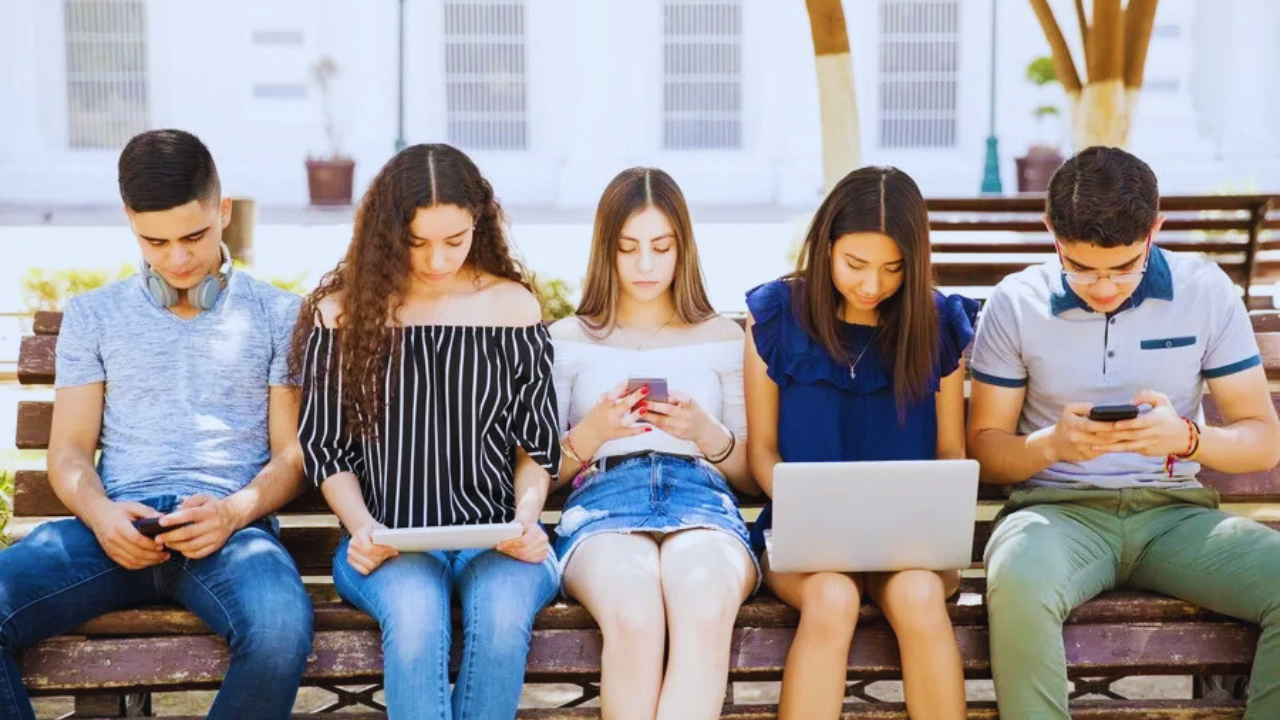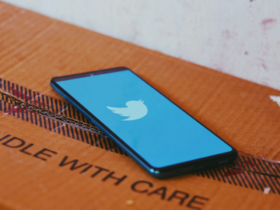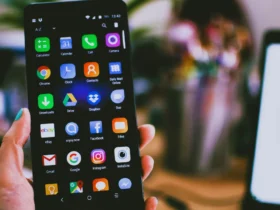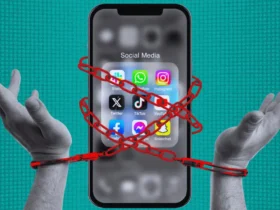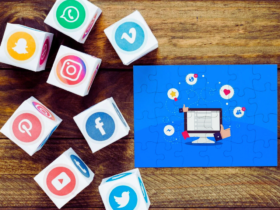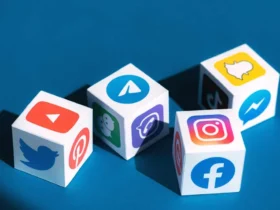Social media has revolutionized the way people connect and communicate across the world. For students, the effects of social media can be both positive and negative, but in recent years, a growing number of studies have highlighted the positive effects it has on students’ lives. From enhancing communication and learning to providing new opportunities for collaboration and personal growth, social media platforms have significantly impacted students in various ways.
I will discuss and explore the positive effects of social media on students, its benefits, and its impact on their academic and personal development. With the right guidance and responsible use, social media can be an invaluable tool for students, fostering creativity, education, and social connections. We will dive into the many advantages social media offers and examine how it can positively influence students’ academic performance, social life, mental well-being, and future career prospects.
Social Media as a Tool for Learning and Education
Social media has become an invaluable tool for learning, transforming how students access information, engage with educational content, and interact with their peers and instructors. Platforms like YouTube, LinkedIn, Twitter, and Facebook have opened new doors for learning by providing students with access to vast resources of educational content, interactive discussions, and real-time updates on a variety of subjects. One of the most significant advantages of social media in education is its ability to facilitate collaborative learning. Students can join groups, participate in online forums, and engage in academic discussions on platforms such as Facebook and Twitter. These interactions allow students to share knowledge, ask questions, and gain insights from others around the world. This makes learning more interactive and dynamic, as students are no longer limited to traditional classroom settings for knowledge exchange.
YouTube, in particular, has revolutionized learning by offering free video tutorials, educational channels, and lectures from experts in various fields. Students can watch these videos to better understand complex topics, practice skills, or catch up on missed lessons. Similarly, LinkedIn offers students a chance to engage with professionals in their field, attend webinars, and access relevant content, helping them gain practical knowledge and build their careers.
Moreover, social media platforms enable students to access real-time information on current events, academic research, and trends in their areas of interest. This timely access to information ensures that students remain updated on new developments in their fields, fostering continuous learning. Through these platforms, students can follow thought leaders, academic institutions, and organizations that share valuable content, offering opportunities to expand their knowledge beyond what is taught in the classroom.
Benefits of Social Media in Education
| Platform | Educational Benefit | Examples of Use |
| Facilitates group discussions and sharing of academic materials | Study groups, university pages | |
| Offers quick updates on academic events and trending topics | Academic hashtags, live tweet events | |
| YouTube | Provides video-based tutorials and lectures | Educational channels, expert talks |
| Enhances career development and networking | Connecting with alumni, job prospects | |
| Encourages creativity and visual learning | Visual boards for projects, infographics |
Social Media Enhances Communication and Collaboration
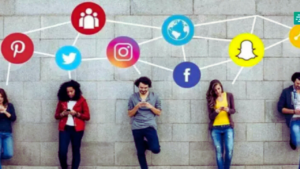
The interactive nature of social media has dramatically transformed how students communicate with each other, their instructors, and professionals worldwide. This constant connectivity has fostered a more collaborative environment, which plays a vital role in academic success. By using platforms like WhatsApp, Facebook, Slack, and LinkedIn, students can easily communicate in real time, share ideas, ask questions, and collaborate on projects, no matter where they are located. One of the key advantages of social media is its ability to facilitate collaboration in ways that traditional learning environments cannot always offer. Students can participate in online study groups, engage in academic forums, and join specialized communities dedicated to specific fields of study. This enables students to connect with others who have different viewpoints, backgrounds, and expertise, thereby enriching the learning experience.
Access to such diverse perspectives helps students tackle complex topics more effectively, as they can learn from the insights and experiences of their peers and experts in the field. Moreover, social media ensures that help is always available. Whether students are working on assignments, conducting research, or preparing for exams, they can turn to online groups or forums for guidance and feedback. This ability to access instant support from fellow students or professionals makes learning more efficient and effective. Additionally, students can benefit from collaboration tools offered by social media platforms, such as shared documents, video calls, and message boards, which enhance teamwork and improve productivity.
Through these interactions, students can hone critical thinking and problem-solving skills, as collaborative efforts often require them to analyze information, make decisions, and reach compromises. Social media, by fostering a collaborative learning environment, not only helps students build stronger academic connections but also equips them with skills they will use throughout their careers. Whether for casual homework help or in-depth project work, social media plays a key role in enhancing communication and collaboration among students, ultimately supporting their academic achievements.
Increased Access to Educational Resources
Social media has revolutionized access to educational resources, providing students with an abundance of learning materials that might not be easily available otherwise. Platforms like Facebook, YouTube, and Twitter host vast libraries of academic content, including free online courses, eBooks, academic articles, and video tutorials. This democratization of education allows students to access quality learning materials at no cost, enabling them to explore topics of personal or academic interest, catch up on missed lessons, and deepen their understanding of various subjects. YouTube, for example, is home to countless educational channels that offer in-depth tutorials, lectures, and lessons across a wide range of disciplines. Whether it’s a complex math problem, a historical analysis, or a science experiment, students can find content that helps them grasp challenging concepts at their own pace.
Platforms like Facebook and Twitter further enhance accessibility by connecting students with educational groups, pages, and accounts that regularly share academic resources, updates, and helpful study tips. Moreover, many educational institutions and organizations offer online learning opportunities through social media. These include webinars, online classes, and virtual workshops that allow students to learn directly from experts, regardless of their location. As a result, social media has made it easier for students to take part in global educational opportunities, attend online courses from prestigious universities, and even earn certifications that enhance their resumes.
Additionally, students can follow renowned educators, research institutions, and academic personalities on social media platforms. By staying connected with these thought leaders, students gain access to cutting-edge research, industry trends, and the latest discoveries in their field of study. This ongoing exposure to new ideas not only broadens students’ knowledge but also promotes a culture of continuous learning, encouraging them to stay informed and curious beyond the classroom. Ultimately, social media’s role in providing increased access to educational resources helps students thrive academically, stay up-to-date with advancements, and pursue lifelong learning.
Social Media and Career Opportunities
In addition to the academic and social benefits, social media plays a significant role in the career development of students. Platforms like LinkedIn, Twitter, and even Instagram offer students unique opportunities to expand their professional networks, connect with industry leaders, and explore career paths. Through these platforms, students can follow professionals in their fields of interest, stay updated on industry trends, and gain valuable insights into what skills and qualifications are in demand. Social media is also an effective tool for students to join professional groups and communities. By engaging in discussions, sharing content, and participating in online forums, students can establish connections with peers, mentors, and employers, all of which are important for career growth.
These interactions help students build relationships that may lead to internships, job opportunities, and other professional advantages. One of the most powerful benefits of social media is its ability to help students create an online portfolio or personal brand. Through platforms like LinkedIn, students can showcase their skills, achievements, and work experiences, which can be a great way to stand out in today’s competitive job market. Instagram and YouTube also allow students to demonstrate their talents, whether it’s through sharing creative work, projects, or thought leadership in specific fields. This online presence makes it easier for recruiters and potential employers to discover students and assess their abilities before even meeting them in person.
By using social media to build a strong, professional online identity, students can improve their visibility and increase their chances of landing career opportunities. When used strategically, social media provides students with a platform to not only network and explore career options but also to showcase their personal and professional growth, opening doors to a variety of career paths.
Social Media as a Career-Building Tool
| Platform | Career Benefit | Examples of Use |
| Networking and professional development | Job searches, connecting with mentors | |
| Personal branding and creative portfolio | Sharing work, building an online presence | |
| Industry news and professional discussions | Following professionals, industry trends | |
| YouTube | Showcasing talents and expertise | Posting tutorials, personal achievements |
| Behance | Portfolio development and exposure | Creative projects, artwork, and design showcase |
Mental Health and Well-being Benefits
Contrary to the common narrative that social media negatively impacts mental health, there are several positive effects that social media can have on students’ well-being, especially when used responsibly. One of the primary benefits is the ability to create a platform where students can express their thoughts and feelings, which is important for mental health. Through platforms like Instagram, Twitter, and Facebook, students can share personal experiences, find understanding communities, and access resources to help with their emotional or psychological struggles. Social media can also provide immediate support through mental health-focused communities and discussion forums. For instance, students can engage with groups dedicated to topics like anxiety, depression, or body positivity.
These spaces provide students with a sense of belonging and reassurance, which is crucial for mental well-being. Through online interactions, they can also gain valuable insights and coping strategies from others who are going through similar experiences. Moreover, social media has significantly contributed to the growth of mental health awareness. Mental health campaigns and online therapy services are now more accessible than ever, breaking down traditional barriers to seeking help. Platforms like Instagram have mental health advocates, counselors, and professionals who offer guidance, tips, and emotional support, helping students feel less isolated.
Social media can also reduce the stigma surrounding mental health, encouraging open and honest conversations. By fostering a culture of acceptance and empathy, students are more likely to reach out for support when they need it. In this way, social media can play a vital role in promoting mental health awareness, encouraging self-care, and providing students with the tools they need to take care of their well-being. When used with intention and mindfulness, social media can be a powerful ally in supporting students’ mental health and helping them navigate the challenges they may face.
Global Awareness and Social Responsibility
Social media provides a unique opportunity for students to engage with global issues and learn about diverse cultures. Through platforms like Twitter, Facebook, and Instagram, students are exposed to worldwide social movements, environmental concerns, and political debates. This exposure helps broaden students’ perspectives, encouraging them to become more socially responsible and culturally aware. By participating in online campaigns or following global influencers and activists, students can develop a sense of empathy and responsibility, which can influence their personal and professional values. Social media encourages students to advocate for causes they believe in, thus fostering a sense of civic engagement and a desire to contribute to society.
Social Media and Social Responsibility
| Platform | Type of Global Awareness | Examples of Use |
| Real-time updates on global events | Participating in hashtag campaigns | |
| Community support and advocacy | Joining groups for social causes | |
| Visual storytelling and activism | Sharing posts on climate change, social justice | |
| TikTok | Raising awareness through viral content | Activism, environmental campaigns |
| YouTube | Documentaries and global insights | Educational videos on world issues |
Wrapping up
The positive effects of social media on students are vast and multifaceted. It serves as a powerful tool for education, career advancement, mental well-being, global awareness, and collaboration. The ability to access a wealth of information, connect with peers and experts, and share ideas in real-time makes social media an invaluable resource for students. Moreover, it provides students with a platform to engage in social causes, express their creativity, and find support when needed. While the potential drawbacks, such as distractions and privacy concerns, cannot be ignored, the benefits far outweigh these challenges when social media is used responsibly.
By fostering creativity, providing access to resources, and promoting social interaction, social media enhances not only academic life but also personal development. Students who approach social media with a balanced and thoughtful mindset can leverage its potential to build networks, stay informed, and develop skills that will benefit them in both their academic journey and future careers. As social media continues to evolve, its role in the lives of students will only grow, offering endless opportunities for learning, growth, and success.
FAQs
How does social media help students in learning?
Social media platforms offer a variety of tools for students to enhance their learning experience. Through platforms like YouTube and Facebook, students can access educational videos, tutorials, and lectures, making learning more interactive and engaging. Additionally, social media allows students to join study groups, follow academic professionals, and participate in global discussions, all of which contribute to a broader knowledge base. Social media also provides a way for students to ask questions and receive instant feedback, making learning more accessible and efficient.
What role does social media play in improving communication among students?
Social media has significantly improved communication among students, enabling them to stay connected with peers, professors, and academic mentors. Platforms like WhatsApp and Slack allow students to create group chats, exchange ideas, share notes, and collaborate on assignments. This constant connectivity fosters a collaborative environment, which is essential for group projects and teamwork. Social media also offers students a platform to engage with professional networks and educational communities outside of their immediate academic environment.
How does social media contribute to career development for students?
Social media platforms, especially LinkedIn and Instagram, play a crucial role in career development for students. LinkedIn allows students to network with professionals in their field, learn about job openings, and access career advice. Instagram and YouTube offer students the chance to showcase their work, build personal brands, and gain visibility. Social media also provides students with the opportunity to follow industry trends, connect with potential employers, and discover job opportunities in a variety of fields.
Can social media have positive effects on a student’s mental health?
Yes, social media can have positive effects on a student’s mental health when used responsibly. Platforms like Instagram and Twitter host communities and support groups that encourage open conversations about mental health. Students can find resources, connect with others who share similar struggles, and receive support from professionals. Social media also helps reduce the stigma surrounding mental health issues, creating a more inclusive environment where students feel empowered to seek help and discuss their challenges.
In what ways can social media increase global awareness among students?
Social media exposes students to global issues, cultures, and movements that they might not encounter in their local environments. Platforms like Twitter and Facebook allow students to engage in worldwide discussions about social justice, climate change, and other important topics. Social media also makes it easier for students to learn about different cultures and perspectives, fostering a sense of empathy and global responsibility. This increased global awareness helps students become more socially responsible citizens who are active in addressing pressing issues.
What are the risks of using social media for students?
While social media offers numerous benefits, it also comes with risks, such as exposure to cyberbullying, privacy concerns, and addiction. Students may become distracted by excessive social media use, which can negatively impact their academic performance. Additionally, social media can sometimes create unrealistic expectations and lead to feelings of inadequacy or anxiety. It is important for students to use social media in moderation, set boundaries, and be mindful of the content they consume and share.
How can students use social media responsibly for academic and personal growth?
To use social media responsibly, students should set clear boundaries and manage their time effectively. They should focus on using social media as a tool for learning, networking, and personal development. Following educational accounts, engaging in meaningful discussions, and avoiding distractions is key to maintaining a productive relationship with social media. Students can also join online communities that align with their academic or career goals, ensuring that their social media experience contributes positively to their growth.
